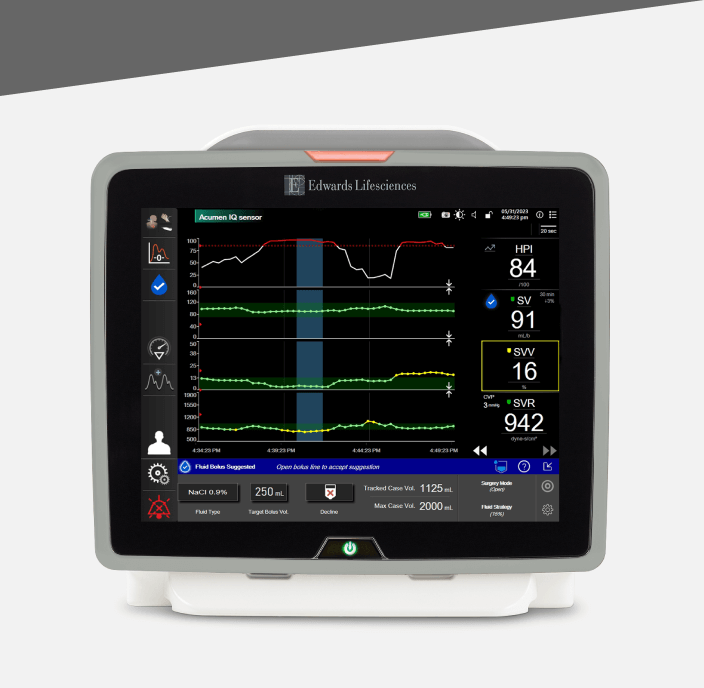Recommends
Provides individualised fluid recommendations
Keep your patients within their optimal fluid range

Deliver a personalised and optimised standard of fluid management. Acumen Assisted Fluid Management (AFM) software uses machine learning to make individualised fluid recommendations so you can optimise fluid administration for your patient.
Provides individualised fluid recommendations
Adapts to your patient by using their past responses to each bolus administered
Automatically tracks volume administration and flow rate in real time
Unlocked by Acumen IQ sensor, Acumen AFM software adapts to your patient by using their haemodynamic data and past responses to fluid administration.
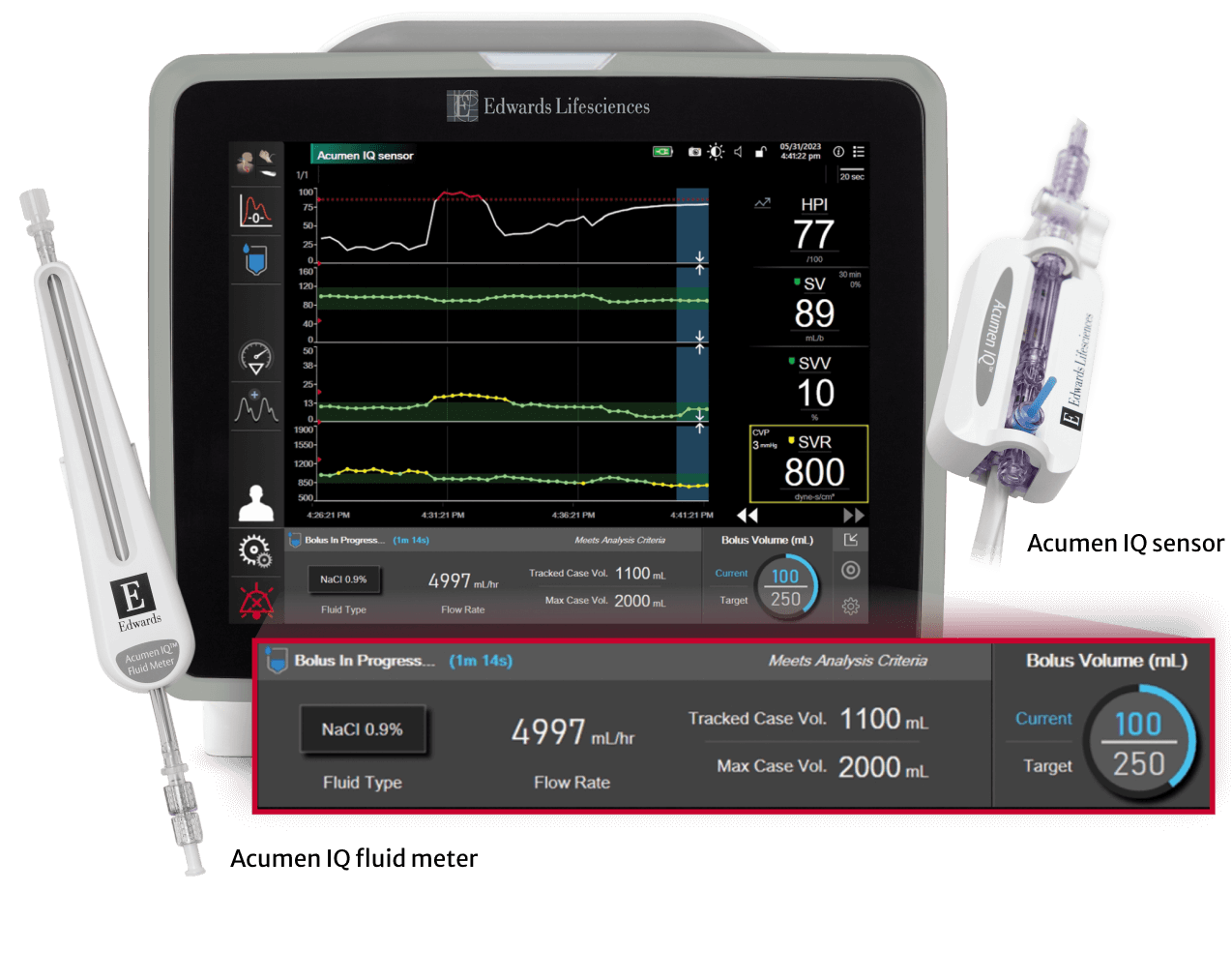
Keep patients in the optimal fluid range with individualised bolus recommendations based on patterns of fluid responsiveness. Throughout a procedure, Acumen AFM software learns from the patient’s response to each analysed fluid bolus to optimise its future recommendations.
Acumen IQ fluid meter automatically tracks volume administration and flow rate in real time.
Model numbers
| Models | Description | Length |
| AIQFM10 | Acumen IQ fluid meter (10-pack) | N/A |
| AAFMC | Acumen AFM cable | N/A |
| AIQSFM6R5 | Acumen IQ sensor with fluid meter (5-Pack) | 60 in/152 cm |
| AIQSFM6AZR5 | Acumen IQ sensor with fluid meter with VAMP adult system (5-Pack) | 60 in/152 cm |
| AIQSFM8R5 | Acumen IQ sensor with fluid meter (5-Pack) | 84 in/213 cm |
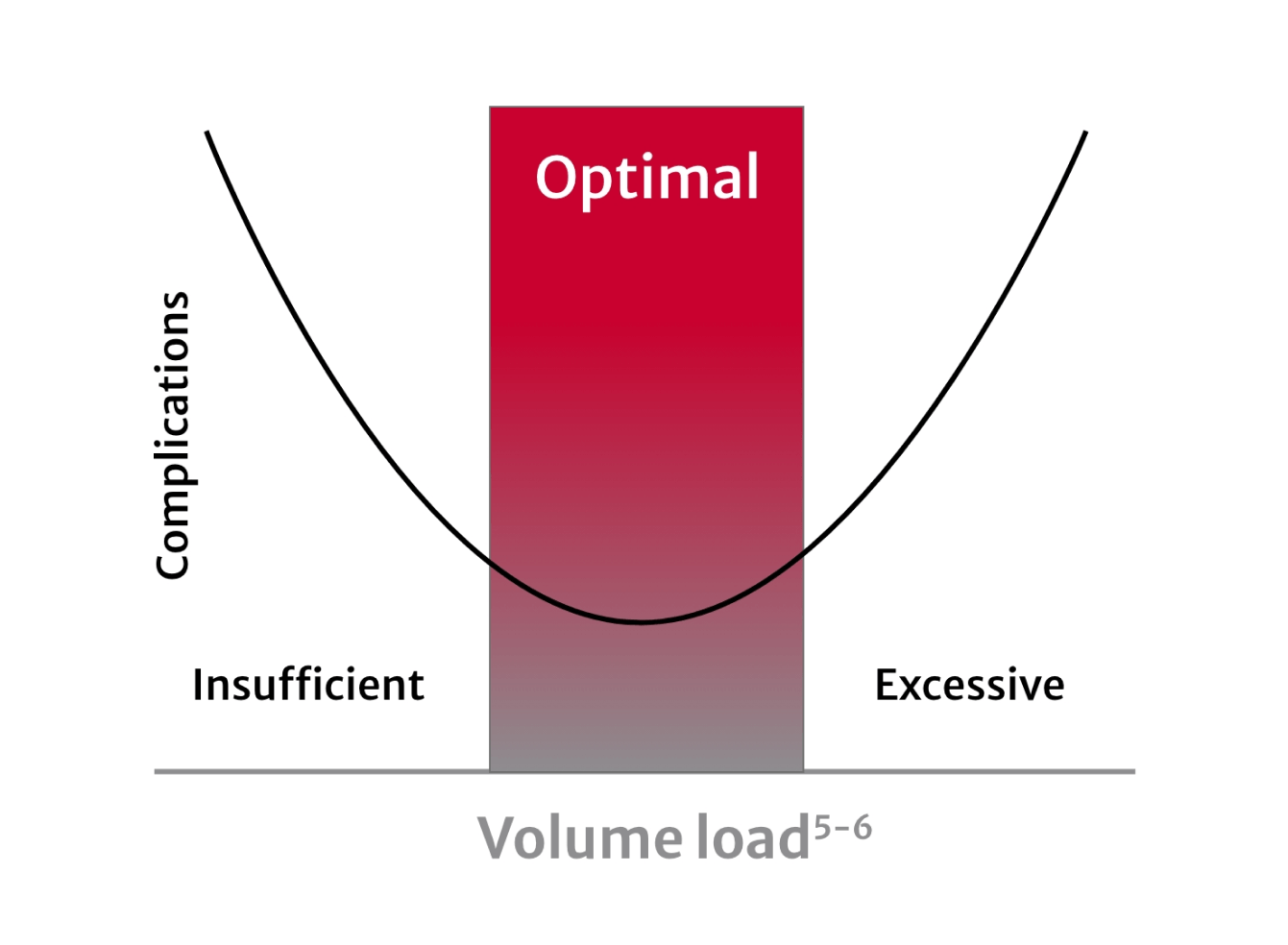
Maintaining patients in the optimal volume range is key. Insufficient and excessive volume administration are associated with complications such as GI dysfunction.1-4
Acumen AFM software provides individualised fluid recommendations, enabling you to optimise fluid administration.

Acumen AFM software is part of the Acumen software suite of intelligent decision support solutions.
With access to advanced haemodynamic monitoring that provides continuous pressure and flow parameters, you gain valuable insight into the adequacy of perfusion – all displayed on HemoSphere monitor.
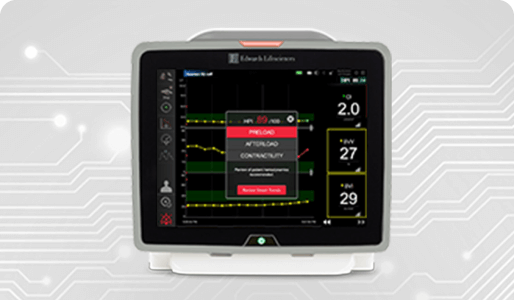
Acumen Hypotension Prediction Index (HPI) software

Acumen IQ cuff*
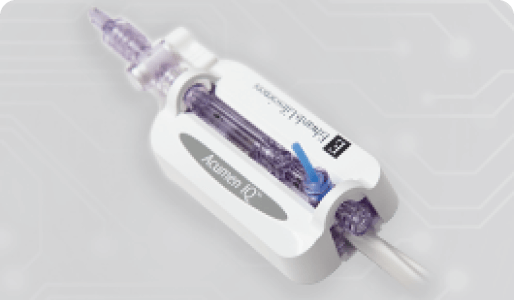
Acumen IQ sensor
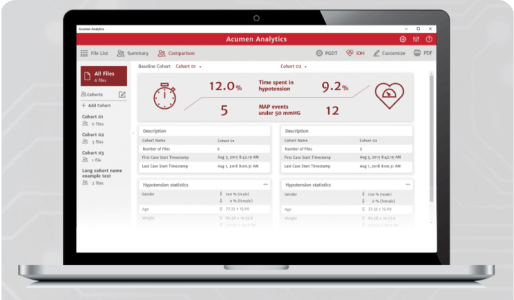
Acumen Analytics software
*Acumen HPI parameter is indicated for surgical patients only when using an Acumen IQ cuff
For a listing of indications, contraindications, precautions, warnings, and potential adverse events, please refer to the Instructions for Use (consult eifu.edwards.com where applicable).
We are committed to providing your institution, clinicians and staff with a high level of customer service and support to ensure seamless product implementation and ongoing use, including:
Monday through Friday, 8:00am to 17:00pm CET
